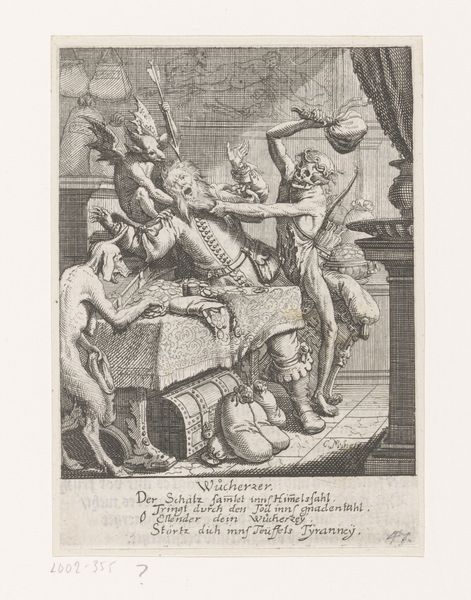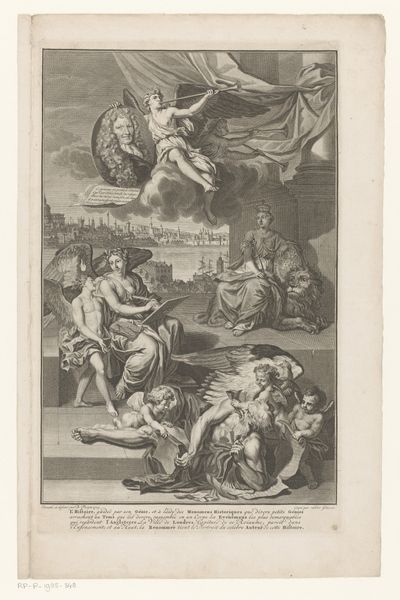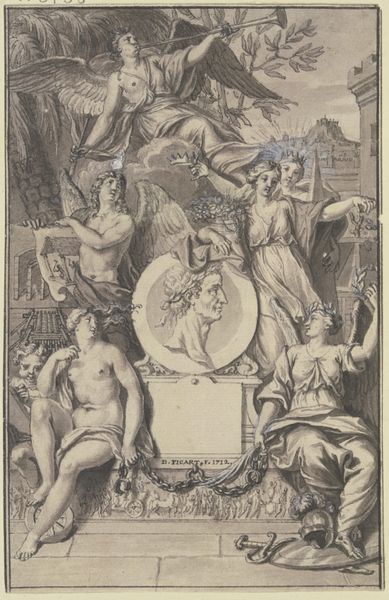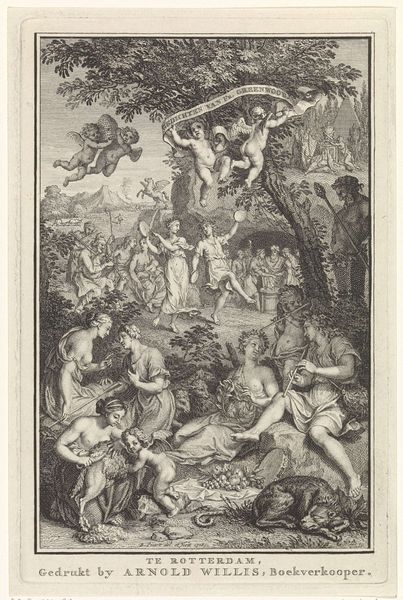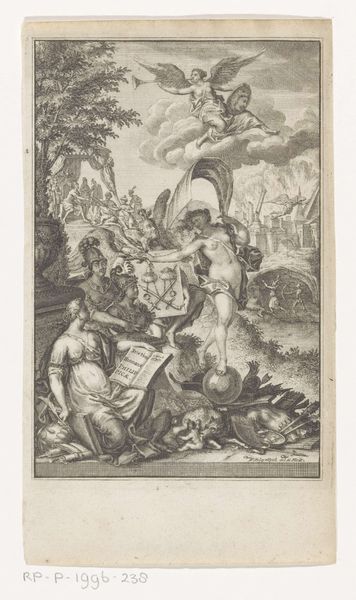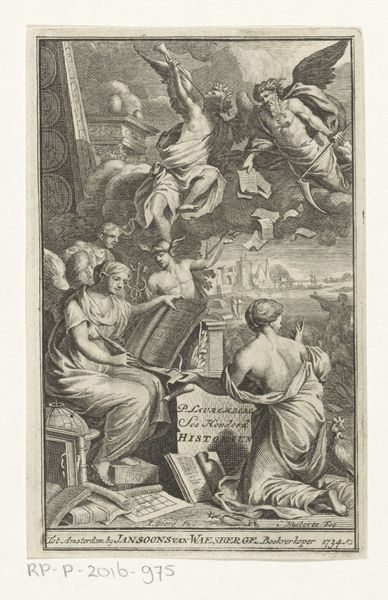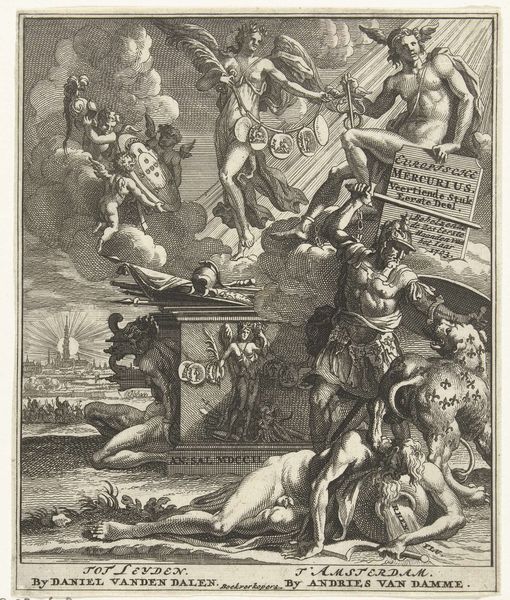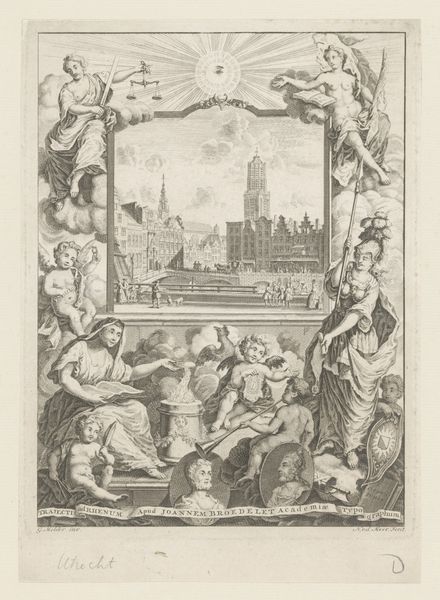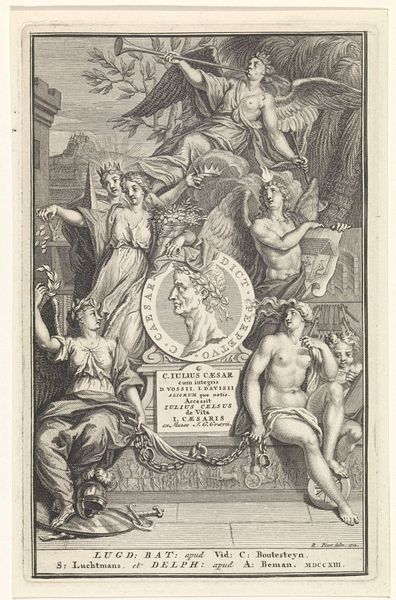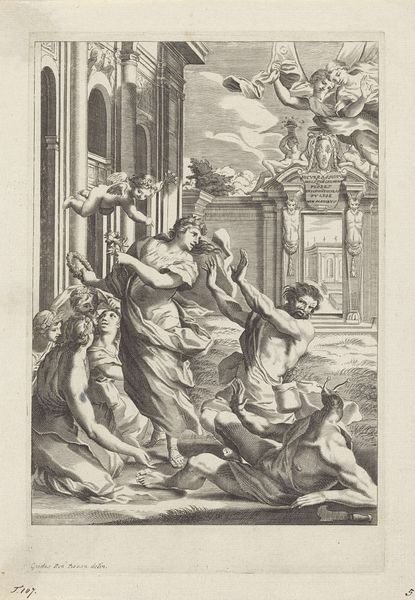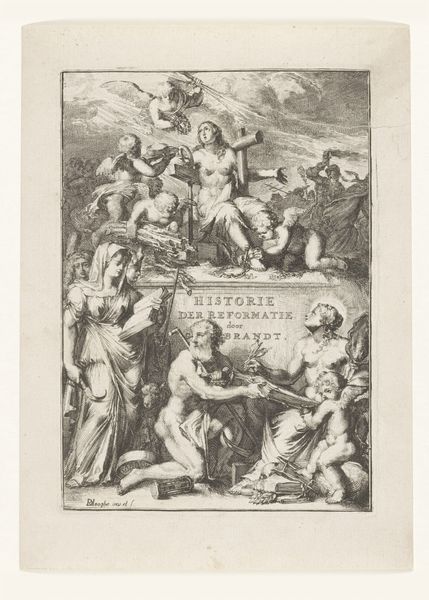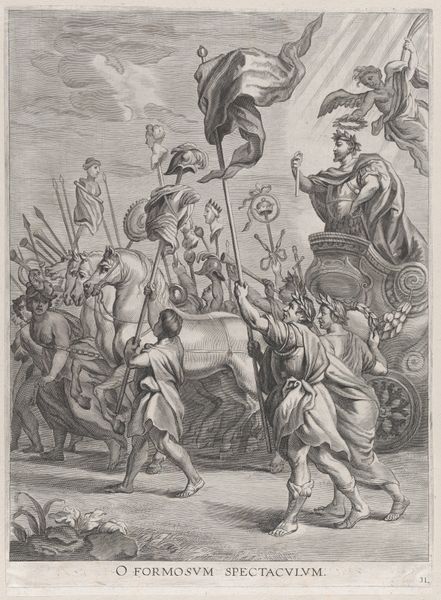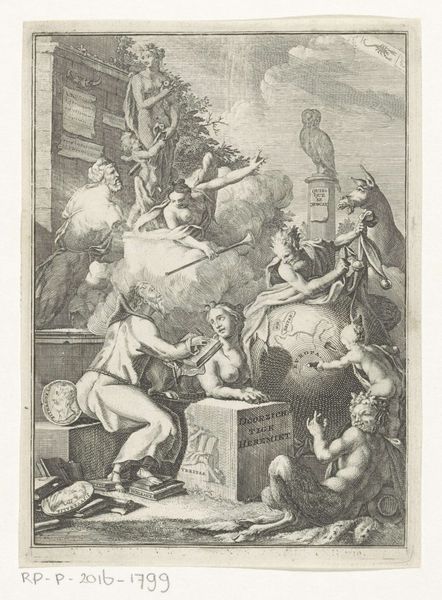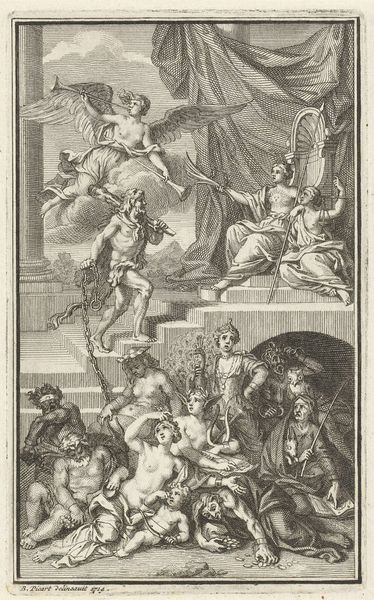
Allegorie met personificaties van Rome, Fortuna en Hercules 1744
0:00
0:00
francoisvanbleyswijck
Rijksmuseum
print, engraving
#
allegory
#
baroque
# print
#
old engraving style
#
caricature
#
figuration
#
form
#
line
#
history-painting
#
engraving
Dimensions: height 166 mm, width 107 mm
Copyright: Rijks Museum: Open Domain
Curator: François van Bleyswijck created this engraving, "Allegory with personifications of Rome, Fortuna and Hercules" in 1744. The print is currently housed in the Rijksmuseum. Editor: It’s quite intricate, almost overwhelmingly so at first glance. There's a lot happening in the composition – it evokes a very grand and rather self-assured sentiment. Curator: The "grand sentiment" aligns with the print's time. The Baroque period was all about visual drama and this engraving, which is typical for its time, captures it well. Rome, Fortuna, and Hercules were commonly used figures to communicate particular ideologies, primarily political. Editor: Ideologies such as what exactly? Because seeing Rome enthroned with Fortuna and Hercules, and then all these other small figures, it reads to me as a sort of celebration of power structures – possibly with colonial undertones considering the reach of Rome's power in that era. The emphasis seems very masculine, looking at Hercules’ prominence in the foreground. Curator: I think it would be useful to consider it through the lens of cultural history. Looking back, in the 18th century, there were particular institutions, political patrons who determined what was made, which could absolutely include perpetuating ideologies and power structures. It's definitely Baroque, but also tied up with early enlightenment views. The print circulated among a particular social strata. Who had access, who saw it and how they were encouraged to read such imagery should be considered. Editor: Precisely, what was Bleyswijck hoping to accomplish and to whom was he pitching it? Thinking of a contemporary audience, there is definitely a perspective on historical visual cues when thinking about Rome as an ideal or metaphor in modern rhetoric or nationalistic dialogue. Curator: So, by situating this work historically and critically, we begin to understand its ongoing dialogue with politics. How artistic expression shapes perceptions. It reminds us that the history of art is deeply intertwined with the unfolding of events around us. Editor: And as art evolves, how our reading of the artwork changes too. Definitely something to consider the next time I look at this engraving.
Comments
No comments
Be the first to comment and join the conversation on the ultimate creative platform.
